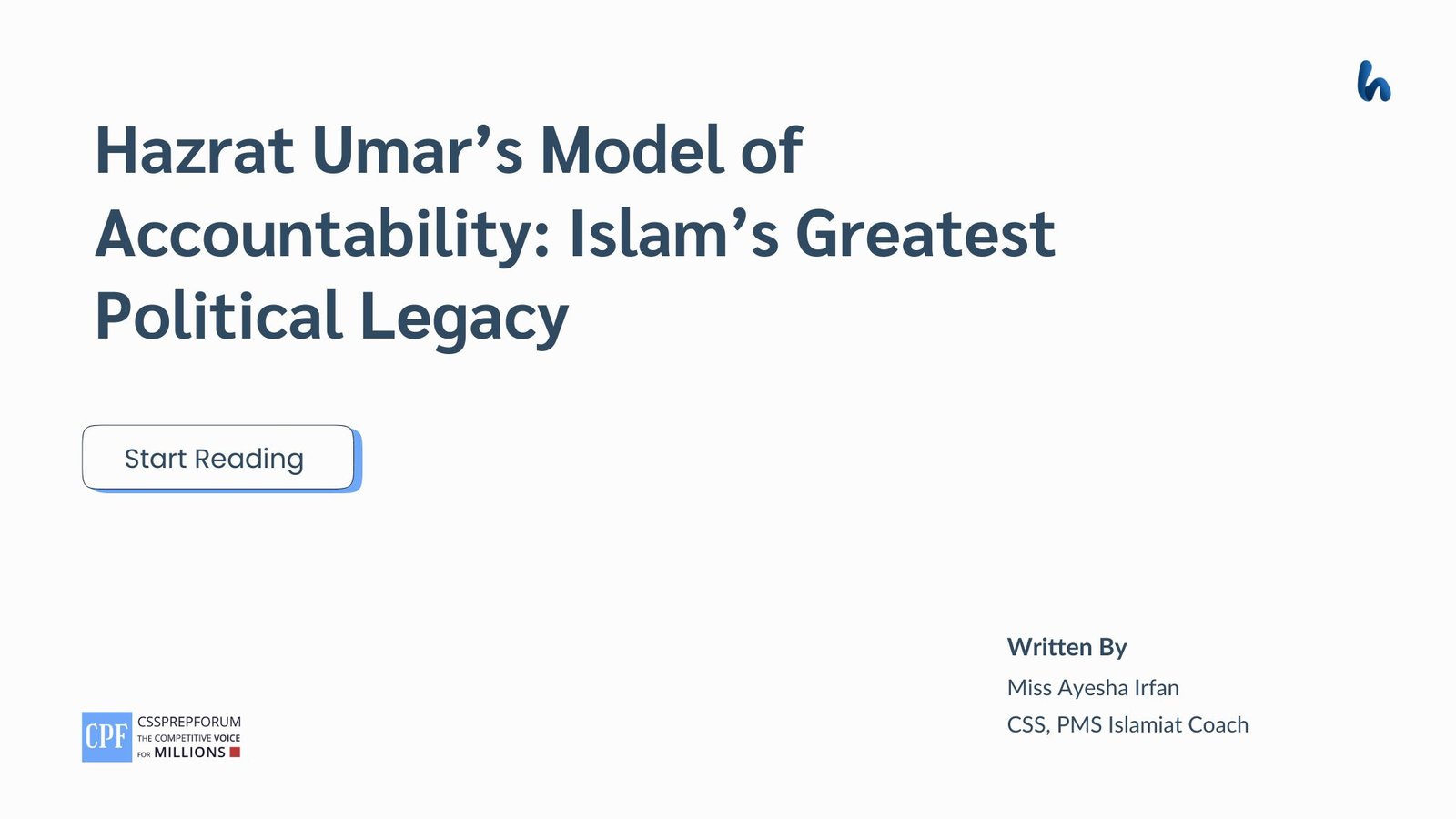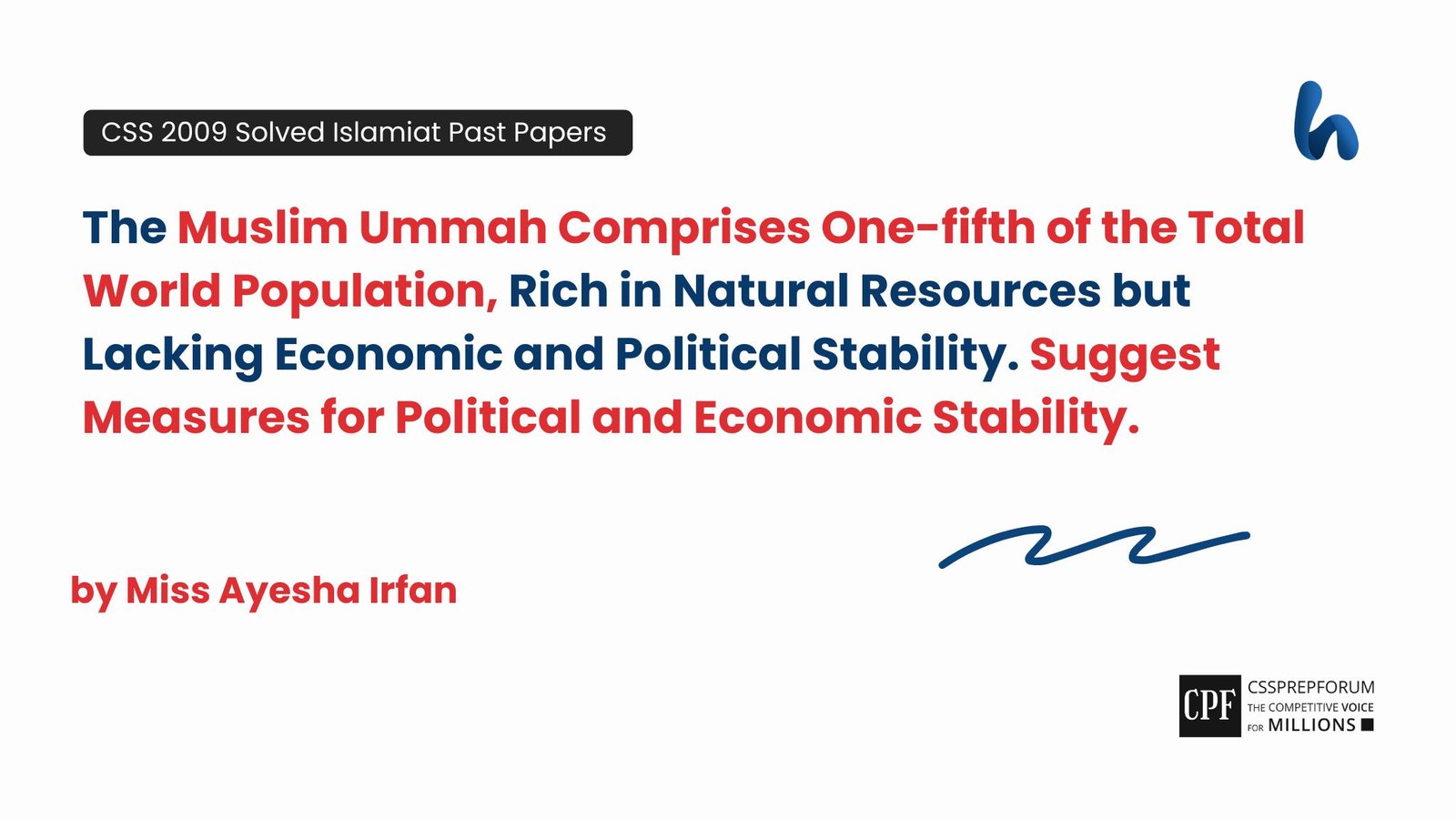CSS 2013 Solved Current Affairs Past Papers | The Causes of Energy Crisis in Pakistan
The following question of CSS Current Affairs 2013 is solved by Sir Ammar Hashmi, the best Current Affairs Coach, on the guided pattern of Sir Syed Kazim Ali, which he taught to his students, scoring the highest marks in compulsory subjects for years. This solved past paper question is uploaded to help aspirants understand how to crack a topic or question, write relevantly, what coherence is, and how to include and connect ideas, opinions, and suggestions to score the maximum.

Question Breakdown
This question has two main parts: first is the critical evaluation of the causes of the energy crisis in Pakistan, and second is the consequences of the energy crisis for the economic growth and social fabric of the country.
Outline
1-Introduction
2- Pakistan-Under the radar
- Evidence: the words of Dr Shazia Anwar Cheema
3-The causes of energy crisis in Pakistan
- ✓Existing demand-supply gap
- Evidence: According to the World Bank Report, the country’s energy demand is lower than surplus supply owing to new generation additions
- Evidence: According to the World Bank Report, the country’s energy demand is lower than surplus supply owing to new generation additions
- ✓ Line losses
- Evidence: According to the National Electric Power Regulatory Authority (NEPRA) Report, the transmission and distribution (T & D) losses in Pakistan are about 13.81 %.
- Evidence: According to the National Electric Power Regulatory Authority (NEPRA) Report, the transmission and distribution (T & D) losses in Pakistan are about 13.81 %.
- ✓ Reliance on non-renewable energy resources
- Evidence: Pakistan buys oils from the U.A.E, Qatar, Kuwait, and Saudi Arabia
- Evidence: Pakistan buys oils from the U.A.E, Qatar, Kuwait, and Saudi Arabia
- ✓ Governance Challenges
- Evidence: According to the research conducted by the Institute of Strategic Studies Islamabad (ISSI), “Pakistan’s energy crisis is not solely the result of rising energy costs; it also stems from structural inefficiencies, outdated infrastructure, and accountability issues.”
4- Consequences of the energy crisis in Pakistan
- ✓ Worsening economic conditions
- Evidence: Almost 70 percent of Pakistan’s population is involved in agricultural activities and contributes around 25 percent of its share from the agricultural sector to the national GDP
- Evidence: Almost 70 percent of Pakistan’s population is involved in agricultural activities and contributes around 25 percent of its share from the agricultural sector to the national GDP
- ✓ Increasing load shedding
- Evidence: According to the Council for Scientific and Industrial Research (CSIR), it highlighted in its report the intensified load shedding of 2022, the first year that most of the rotational cuts have been implemented at Stage 4, representing 4,000 MW of simultaneous cuts.
- Evidence: According to the Council for Scientific and Industrial Research (CSIR), it highlighted in its report the intensified load shedding of 2022, the first year that most of the rotational cuts have been implemented at Stage 4, representing 4,000 MW of simultaneous cuts.
- ✓Never-ending circular debt
- Evidence: the circular debt reached Rs. 2.31 trillion in June 2023.
- Evidence: the circular debt reached Rs. 2.31 trillion in June 2023.
- ✓Industrial loss
- Evidence: the textile industry, which deals with more than 60% of Pakistan’s exports, has been negatively impacted by energy shortages as these shortages have resulted in 20 to 30%of losses in textile production
5-Pakistan’s Efforts to Mitigate the Prevailing Energy Crisis
6-Solutions to Overcome the Ongoing Energy Crisis
7-Critical Analysis
8-Conclusion

Introduction
Nothing hampers a country’s socio-economic affairs like the energy crisis, as energy is the backbone of all human activities. In today’s fast-paced world, the energy crisis is the most pressing concern in developing countries. The reason is that activities ranging from trade to transport are all energy-dependent. However, the energy crisis affects the regularity of societal and fiscal dealings. In particular, the energy crisis in Pakistan has been a major problem for the country’s residents for the past few years. It is the result of the negligence of the governments coming after 2010. As the debate unfolds, a series of causes comes forth. The energy crisis has caused great havoc in Pakistan owing to the high demand-supply gap, energy leakage through transmission lines, and heavy reliance on non-renewable energy sources. In turn, it is not hard to understand that the country has witnessed the ruinous effects of the energy crisis. The adverse impacts include burgeoning economic instability, unstoppable load shedding, and an invincible debt trap. Nevertheless, if the government pays heed to the ongoing crisis, it’s not too late to take pragmatic measures to counter the energy crisis. It can be done by overcoming excessive energy usage, implementing advanced technology in the energy sector, and focusing on renewable energy resource usage. This answer discusses the overarching causes of the energy crisis in Pakistan, its deep-rooted impacts, and the way forward to counter it.
Pakistan Under the Radar
Presently, Pakistan has been facing the worst energy crisis in 2023. The problem is worsening day by day owing to many reasons, like the demand-supply gap, dependence on non-renewable energy resources, electricity theft, circular debt, poor policy planning, economic instability, and governance issues. According to the words of Dr Shazia Anwar Cheema, a foreign affairs analyst, “Pakistan is facing an extremely challenging winter this year as a result of the failing long-term energy policies.” Many international reasons have also contributed to the energy crisis, including the Russia -Ukraine war, inflation of crude oil from Russia, and the economic crisis. Pakistan’s energy cost has doubled in the last 9 months, costing 15 billion USD. Hence, the country has been facing a chronic energy crisis, badly impacting its socio-economic growth.
Causes of the energy crisis in Pakistan
The worsening energy crisis in Pakistan has not happened automatically. Many factors are responsible for it. Here, some of the major looming causes of the energy crisis will be discussed.
- ✓Existing demand-supply gap
To begin with, the existing demand-supply gap of energy is the foremost reason for the energy crisis in Pakistan. The case of the demand-supply gap in the country’s energy sector is a bit different as the supply of energy is more, whereas its demand is less in Pakistan. As the debate unfolds, the excessive supply to the country results from prolonged IPP agreements. On the contrary, the demand for energy is low; according to the World Bank Report, the country’s energy demand is lower than the surplus supply owing to new generation additions. That’s why the World Bank recommends expanding renewable energy sources to produce cheaper electricity, gain energy security, and reduce carbon emissions, helping Pakistan save up to $5 billion over the next 20 years. However, the demand-supply gap needs to be avoided by reducing the excessive investment in the import of power generation.
- ✓ Line losses
Moving next to it, another major root cause in the burgeoning energy crisis in Pakistan is line losses or electricity wastage through transmission lines. Line losses can be described as the disparity in transmission and distribution between the production and consumption of electricity. As per the estimated stats, Pakistan produces almost 12000 megawatts more electricity than its actual requirement, but most of the energy is lost via the transmission lines. According to the National Electric Power Regulatory Authority (NEPRA) Report, the transmission and distribution (T & D) losses in Pakistan are about 13.81 %. Most electricity is usually lost through long-distance transmission lines, non-upgraded cables, and transformers. Hence, line losses are a key factor responsible for the persisting energy crisis in Pakistan.
- ✓Reliance on non-renewable energy resources
Moreover, Pakistan’s excessive reliance on non-renewable energy resources such as oil and natural gas also contributes to the years-long energy crisis. The actual reason for an unbalanced energy source is the country’s massive dependence on oil importation for its energy production from Arab countries. As an illustration, Pakistan buys oils from the U.A.E, Qatar, Kuwait, and Saudi Arabia. The government has never tried to explore its energy resources to fulfil its energy needs; therefore, most of the Indigenous energy resources have not been utilized by Pakistan. Thar Coal is one such example, and it can be used as the largest coal reservoir in Pakistan if extracted safely, which is equal to the reservoirs of Saudi Arabia and Iran. Hence, Pakistan needs to have a balanced energy source, which can be achieved by the long-term policy-making of energy production through renewable energy resources, like wind, solar, and hydropower. This will bring development in all sectors of the country by reducing load-shedding.
- ✓Governance Challenges
Furthermore, the energy crisis in Pakistan is also the result of institutional and governance challenges, hindering energy sector reforms. The existence of corrupt practices in the country’s energy sector, like corruption, nepotism, the inefficiency of staff, and the mismanagement of time and resources, ultimately resulted in considerable losses to the national exchequer. For instance, according to the research conducted by the Institute of Strategic Studies Islamabad (ISSI), “Pakistan’s energy crisis is not solely the result of rising energy costs; it also stems from structural inefficiencies, outdated infrastructure, and accountability issues.” However, the crisis is a complex web of institutional irregularities and missing coordination and coherence in the energy-making process. Therefore, the existing governance challenges and institutional problems in Pakistan’s energy sector are responsible for the ongoing energy crisis.
Consequences of the ongoing energy crisis in Pakistan
Here, it is essential to discuss the worsening consequences of the persisting energy crisis in Pakistan that are too severe to be ignored. Some of them will be discussed in this section.
- ✓ Worsening economic conditions
First, the persistent energy crisis has significantly burdened Pakistan’s economy. The country’s fragile economy has already been struggling as it stands on the shoulders of agriculture. To illustrate, almost 70 percent of Pakistan’s population is involved in agricultural activities and contributes around 25 percent of its share from the agricultural sector to the national GDP. In reality, the country is facing a severe economic crisis because of the ongoing load shedding, irregular shutdown, electricity termination, faults in machinery, discontinuation of irrigational water, and the lack of dams and maintenance of existing ones. As a result, these factors have worsened agricultural production and put huge pressure on Pakistan’s economy. Thus, the ongoing energy crisis has played a huge role in the country’s burgeoning economic instability.
- ✓ Increasing load-shedding of gas and electricity
Apart from this, increasing load-shedding of gas and electricity in Pakistan has tarnished the image of Pakistan in the comity of nations. The main reason behind the never-ending load-shedding in the country is the non-availability of oil for transport. The Council for Scientific and Industrial Research (CSIR) highlighted in its report the intensified load shedding of 2022, which is the first year that the majority of the rotational cuts have been implemented at Stage 4, representing 4,000 MW of simultaneous cuts. As the debate unfolds, a series of negative impacts come forth as a result of load-shedding, but the damage to tourism in the country has been the worst consequence of all. The worsening situation shows that the energy shortfall of about 7,500 megawatts results in 10-18 hours of load-shedding, making foreigners reluctant to visit Pakistan’s northern areas and lowering foreigners’ visits to Pakistan, ultimately resulting in the decline of prominent GDP share. Hence, increasing load shedding is the major impact of the pertinent energy crisis in Pakistan.
- ✓ Never-ending circular debt
Besides, the never-ending circular debt has deep-rooted impacts on Pakistan’s economic progress. The phenomenon of circular debt has many reasons that make it responsible for structural and operational failures of the energy sector. Still, subsidies and tariffs, among all, are top of the list. Pakistani governments have tried to save citizens from massive energy costs by providing subsidies; however, inadequate subsidies have always resulted in revenue-cost disparities. As a result, the circular debt reached Rs. 2.31 trillion in June 2023. Hence, the untimely and inaccurate patterns of subsidies resulted in an electricity cost gap in its generation and distribution and a widening revenue gap, working as a major contributor to the country’s circular debt.
- ✓ Industrial loss
Last but not least, the persistent energy crisis has severely impacted Pakistan’s industrial growth, as energy is the key driver of industrial growth. The country’s key industries, like textile, cement, and steel, are heavily dependent on effective energy sources for better production flow; however, the ongoing energy crisis has raised the cost of production, ultimately leading to inflation and economic instability. The crisis gave birth to power outages, ultimately leading to production delays. Likewise, the increased costs for alternative energy sources like generators to meet national and international industrial needs result in declining global competitiveness. For instance, the textile industry deals with more than 60% of Pakistan’s exports, which have been negatively impacted by energy shortages, as these shortages have resulted in 20 to 30% of losses in textile production. This loss indicates that the growth of the industrial sector is crucial for economic development, job opportunities, and export and trade growth, which the prevalent energy shortages have disrupted. Nevertheless, the energy crisis has disrupted the industrial development in Pakistan.
Pakistan’s Efforts to Mitigate the Prevailing Energy Crisis
It’s not the case that Pakistan’ has never tried to mitigate the prevailing energy crisis. For this, the country has taken different initiatives and initiated multiple policies. The first one was The National Power Policy 2013, which aimed to efficiently generate a power production, transmission, and distribution system. After that, the Power Generation Policy 2015 was initiated to produce the cheapest energy using indigenous energy resources. Then, Alternative and Renewable Energy Policy 2019 started to opt for using renewable energy resources. Although the country has tried to work through different policies, it has always been constrained by budgetary, technical, and technological issues.
Solutions to Overcome the Ongoing Energy Crisis
There can be many ways to mitigate the energy crisis; however, avoiding excessive energy usage on individual and collective levels is above all. With the energy crisis deepening, the communities should inform each other by engaging through text messages or social media to limit their energy use. At the domestic level, family members should encourage each other to avoid unnecessary usage of large appliances and unplug unused electronics. On a larger scale, the Pakistani government should encourage the usage of electric vehicle (EV) technology to phase out petro usage. Many developed countries have opted for this option, like The EU (European Union), the UK, Iceland, and Norway; even India aims to have a 40% EV fleet by 2030. Therefore, such measures can significantly help counter Pakistan’s current energy crisis.
In addition to this, the government should take initiatives to encourage public-private partnerships to mitigate the energy crisis in Pakistan. The public sector in the country should take measures to opt for renewable energy options. However, the government should consider private collaboration with countries like China, which may offer partnerships and the latest technologies to counter the energy crisis. Along with this, the government should provide subsidies to the enabled energy sector. Thus, promoting public-private partnerships locally and internationally can help mitigate the energy crisis.
Last, Pakistan should opt for renewable energy resources. It would not only be cheaper but also help reduce produce less air pollution. The World Bank Report also recommends the usage of solar and wind power to 30 percent of Pakistan’s total electricity generation capacity by 2030. Moreover, a shift to renewable energy resources is in dire need of an hour to combat climate change as it is the quickest, safest, and easiest option to save the country and globe from burning. The examples of many countries, like Norway, China, Germany, and Uruguay, are worth mentioning here, moving towards renewable energy options.
Critical Analysis
Critically, the continuing energy crisis is considered the web that hinders Pakistan’s socio-economic development. It has destabilised the country’s secure economic and societal future due to governance failure, lack of technological upgrades, and failure and political instability. It ultimately has resulted in less-firm energy policies and haunting circular debt. In a word, the energy crisis has paved the way for Pakistan towards default fears and economic decline, threatening the country’s stable future.
Conclusion
In a nutshell, Pakistan’s energy crisis has become a significant concern. However, the country can be on a new path of glory by overcoming its challenges in the face of political instability, governance crises, circular debt, and non-renewable energy resource usage in its true spirit. To mitigate the crisis, the government should shift towards long-term, real-time, and visionary energy policies. Also, reshaping the energy sector, advancing technology and restructuring IPP agreements can help Pakistan fight such a crisis with full strength. By taking the above-mentioned remedial measures, Pakistan can move the mountains and reach new heights of socio-economic progress.

CSS Solved Past Papers’ Essays
Looking for the last ten years of CSS and PMS Solved Essays and want to know how Sir Kazim’s students write and score the highest marks in the essays’ papers? Then, click on the CSS Solved Essays to start reading them.
CSS Solved Essays
CSS Solved General Science & Ability Past Papers
Want to read the last ten years’ General Science & Ability Solved Past Papers to learn how to attempt them and to score high? Let’s click on the link below to read them all freely. All past papers have been solved by Pakistan’s top CSS GSA coach having the highest score of their students.
General Science & Ability Solved Past Papers












